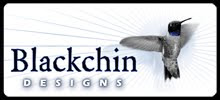When I started birding a few years ago, I noticed something weird: I was in one of the most ethnically diverse communities in the country (Orange County, California, just south of Los Angeles) , but almost all the birders I met were white. And even they realized that this wasn't a good thing.
And so did John Robinson, one of the tiny number of African-American birders and professional naturalists. After years of enduring double-takes from people who'd never seen a black guy with a spotting scope, he began to investigate why so few people of color are birders. The result of his investigation is his book Birding For Everyone: Encouraging People of Color to Become Birdwatchers
Some of the answers he finds—gleaned from interviews and recent results of the National Survey on Recreation and the Environment— are unsurprising: A lack of role models. A lack of exposure to and education about the pleasures of the natural world. (Oddly, the top reason African-Americans surveyed gave for not birdwatching was a lack of time—something birders of all backgrounds can relate to.)
Some might wonder why it's a problem that the birding world is as white as a Bufflehead's belly: after all, birding is a hobby, not a career choice. So what if some of America's ethnic communities have different recreational preferences than others?
Robinson has a long-sighted answer: it's not just about the people. It's about the birds. Like it or not, non-white populations in the US are growing faster than white populations (back home in California, whites are already less than 50% of the state's population). And yes, non-white Americans do vote. Will this population be willing to support national parks and nature reserves if it has no idea what's in them? Will people be willing to support legal measures to protect wild birds if they've never seen one?
So, the fact that the youngest, fastest growing groups in the country have little interest or connection to the natural world not a just social problem: it's an environmental problem. And Robinson points out that he's not the only one to make this claim: it's long been a concern of environmental activists of all backgrounds.
Robinson's proposals to reverse this trend are eminently reasonable: Outreach efforts to schools and low-income communties by environmental professionals (including commerical birding enterprises such as optics companies). Get birding and nature advocates involved in educational partnerships with groups such as Head Start. And while he emphasizes that the white birders he's encountered have been welcoming and friendly, he recommends that nature reserves and birding groups target some of their public relations campaigns explicity to minority audiences.
Robinson's book simultaneously addresses two audiences: people of color on the verge of becoming birders, and experienced birders/environmental activists interested in making the birding world more inclusive. This makes the work a bit schizophrenic: the former group may not be interested in statistics about why people like them aren't birding, and the latter won't care about the detailed instructions about how to use binoculars effectively.
He also plays down the role of cultural factors in the absence of minority birders, only mentioning that cultural preferences have been examined and are considered "controversial". I can't speak for the African-American community, but I do know that less-assimilated Asian-Americans would rank birding somewhere between beer pong and karaoke on the scale of usefulness in personal and professional development. (When I first saw Robinson's book, I immediately imagined equivalent volumes addressed to my peeps: "Just Because It's Inedible, Doesn't Mean It's Uninteresting! Birding for Chinese-Americans" or "Birding: It Will Raise Your AP Biology Scores and Look Awesome on Your Yale Application!")
Someone needs to spell out (diplomatically) the uncomfortable truth: some cultures put less emphasis on the importance and sanctity of the natural world than others, and it's up to insiders with a knowledge and understanding of these cultures to change this. (Sigh. Okay, I just did it.).
And here's something else I'd tell an inner-city or newly-immigrated would-be birder: Birding doesn't have to be expensive. Sure, there are a lot of people out there with $1000+ bins who regularly jet to Costa Rica to expand their life lists, but you can still have an amazing time without doing this. (In about three years, I've gotten over 300 lifers and had tons of fun with my $60 no-brand Sports Chalet binoculars.)
But these are quibbles. Robinson has performed an important service by pointing out that environmental stewardship—and enjoyment of the natural world—are too often perceived as white concerns instead of what they are: human concerns. And his passion for birds, and for serving as a role model to minority birders, is contagious. I'm looking forward to seeing where he takes this mission next.























